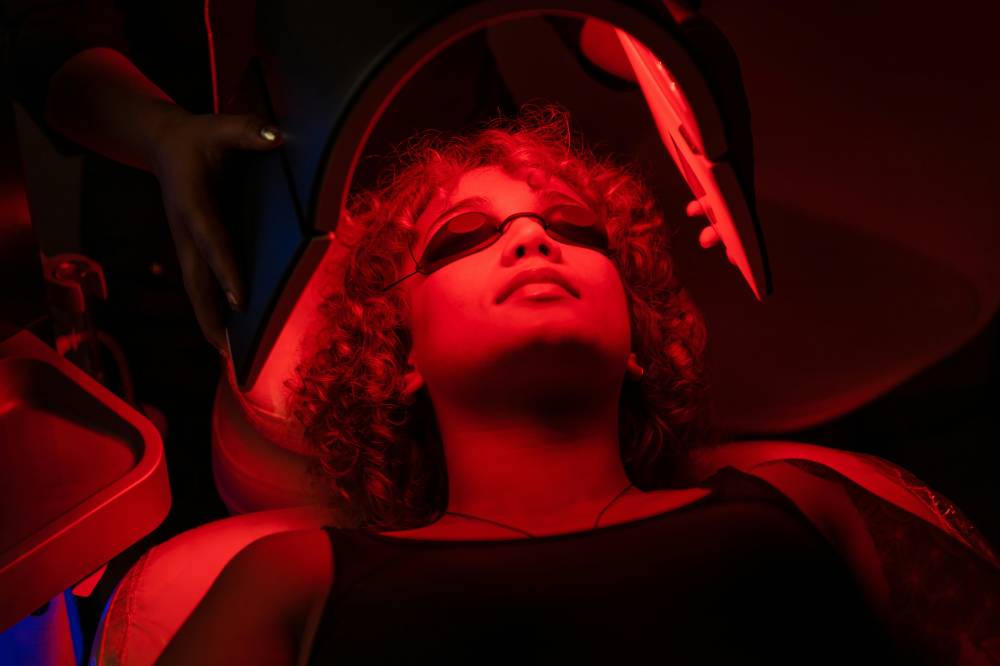Is red light therapy worth the hype?

As we get older, our body starts sending blatant signals: fine lines show up uninvited, skin gets a little less bouncy, and that youthful glow? It takes a bit more effort to achieve.
But aging doesn’t have to feel like that. With the right habits, products, and treatments, you can age gracefully—or at least make your skin look like it’s still living in its prime. And yes, your future self will thank you for it later.
What is red light therapy?
In the quest for youthful-looking skin, countless products and treatments are being offered in the market—including red light therapy. This treatment (also known as photobiomodulation) uses low-level wavelengths of red light to help treat skin issues like stretch marks and wrinkles, and reduce inflammation, among others.
Red light therapy was initially used to promote plant growth in the ’90s by NASA, though they later discovered that it can help heal wounds. And while further studies are needed to confirm all its benefits, red light therapy is becoming more popular as a skincare and anti-aging treatment.
As a non-invasive treatment that uses low-level wavelengths of red or near-infrared light to penetrate the skin, red light therapy is said to rejuvenate the skin, reduce inflammation, and promote healing at a cellular level. That’s because at low wavelengths, red light doesn’t generate heat, but it does penetrate the skin at a surface level, which produces a positive biochemical effect that strengthens the mitochondria—the powerhouse of the cell.
How red light therapy works
Red light therapy is a simple and painless treatment, wherein you’re exposed to red light for three to 15 minutes. You’ll be made to wear eye shields the entire time, and feel a warm sensation that shouldn’t be uncomfortable or too hot. And while red light feels gentle, the benefits come from consistent use over weeks or months.
This treatment is offered in dermatology clinics. But recently, at-home masks have been available in the market as an accessible option for those who want to incorporate it into their skincare routines. However, it is important to note that the latter option is generally less powerful than professional-grade equipment, which means the results take longer to show and can be more subtle.
But with regular use (while observing proper safety precautions, like wearing eye protection), you can get the benefits without having to visit clinics.
As for what it can do, red light therapy helps your skin function better from the inside out. And it shows, especially on your face, because it:
- Stimulates collagen production: Collagen is the key ingredient to youthful, plump, and supple skin. Red light therapy benefits include boosting your skin’s collagen levels, which helps reduce fine lines and wrinkles.
- Improves skin tone and texture: Red light therapy for the face encourages turnover and repair on a cellular scale, which helps even out your complexion by smoothing rough or damaged skin.
- Reduces inflammation and redness: If your face is prone to conditions like acne and skin irritation, the treatment helps calm down inflamed skin.
- Accelerates healing: Healing from breakouts, sun damage, or post-treatment redness? Red light therapy can help speed up the recovery process.
What’s more, studies have shown that red light therapy can be used as a supportive therapy for some kinds of cancer, as it can lessen pain and inflammation from radiation, chemotherapy, and bone marrow stem cell transplants. It is even said to help reduce some complications from cancer treatments, including scars and fibrosis, and even oral ulcers.
And while research shows it can help with muscle performance and recovery from sports-related injuries, further studies need to be looked into for its efficacy.
Can anyone use it?
It’s a case-to-case basis. It’s important to note that while red light therapy promises all these benefits, more studies need to be conducted to see if it really matches up. What’s more, it’s an emerging treatment. And like all treatments, it comes with side effects like redness or light sensitivity, especially if your skin is prone to sunburns, along with risks like burns, lesions, and blistering from misusing the equipment.
Some users of the at-home treatment have also reported cases of melasma—an overproduction of melanin in the skin. This results in patches of discoloration, which is a counterintuitive aftermath. In cases like this, treatment should be discontinued.
This is why it’s important to consult a dermatologist first before using red light therapy. After all, users who are prone to hyperpigmentation and melasma, or even experience hormonal triggers could get adverse reactions from the treatment.
Generally, when used properly, whether in a clinic or at home, red light therapy is safe. Just make sure to always wear eye protection and follow the manufacturer’s instructions. And remember that it isn’t a one-and-done solution. It’s a slow investment for overall skin health—with small, consistent sessions that slowly but surely support skin over time.
And like all other emerging treatments, results show differently for people. Some see visible changes, while others may notice minor improvements.

















